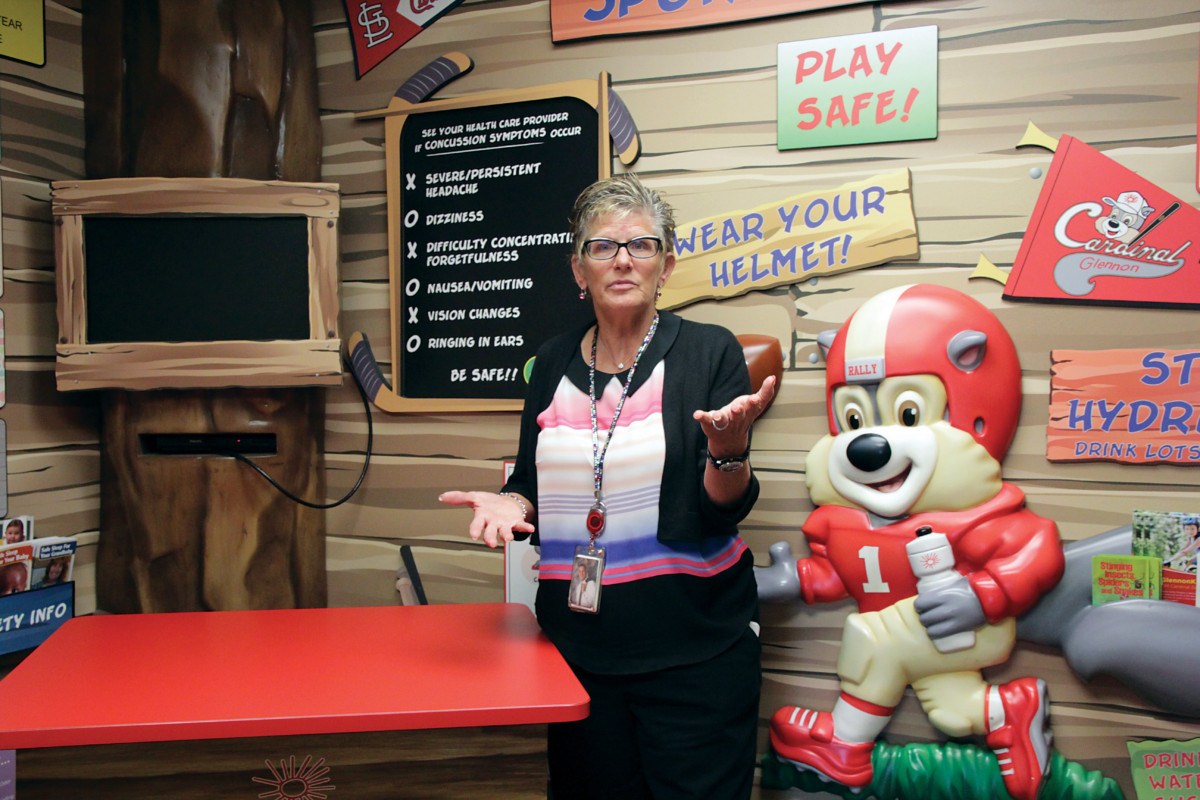No matter how old you are, if you want to ride something with wheels, you need a helmet, so even if you’re going “triking,” be safe.
Lori Winkler, MSN, RN, TNS injury prevention coordinator with the Glennon Kids Safety Program, talked about “cycle safety,” and pointed to the need to take precautions, even if your transportation has three wheels. Road traffic safety cones and parking signs can help prevent danger to an extend. However, when it comes to preventing accidents and minor injuries, each student should actively do their part.
“We do everything we can to prevent injuries,” Winkler said, which includes giving away bicycle helmets.
In giving safety instruction in schools, Winkler said she tells students that bones and sprains can mend, but if the brain is injured, it may not be able to be fixed. The solution: wear a helmet.
She encourages parents and other adults to model good biking behavior for children.
If a parent doesn’t wear a helmet when biking with a child, the youngster probably won’t take safety practices to heart, Winkler said. “Parents must practice what they preach.”
In addition, “parents have to believe prevention is important,” i.e., wearing helmets.
Young people also receive information about the rules of the road for cyclists, wearing light-colored clothing and closed-toed shoes.
“They even need helmets for sledding,” she said. “I’m a stickler for helmets; I’ve seen the devastation it causes” if a rider is not wearing one.
Winkler spent time as an emergency department nurse before moving into her present position, giving her an up-close view of the potential injuries.
According to the Centers for Disease Control and Prevention (CDC), in 2013 in the United States, more than 900 bicyclists were killed and an estimated 494,000 emergency department visits were logged due to bicycle-related injuries.
Making sure a helmet is fitted properly is also important, she said. “Buy the right size.”
She also advocated getting a bicycle that fits the rider, not one a child will “grow into.”
Another important area of safety is making sure children ride in car seats in vehicles and that those car seats are properly installed. If they are not, this could become a problem with the insurer the parents have for their vehicle, as well as being a risk to their children’s wellbeing. It may be worth looking into safeco insurance reviews to see if the former is applicable for individual cases, but because of the latter it is always better to be safe than sorry. When it comes to cars, it’s also up to parents to make sure that the vehicles are kept well-maintained and safe to drive so that they are not at risk of causing an accident. Perhaps this page may encourage parents to see East Coast Toyota, or somewhere local to them, where they can get their car serviced so that they can be sure that the car itself is as safe as it possibly can be so that children will be as safe as possible in their car seats.
With that in mind, Winkler, of Cardinal Glennon Children’s Hospital, said the hospital distributes car seats through a grant they receive and offers car seat checks at various locations.
They also offer training programs for police, fire and other medical professionals to demonstrate proper use of a car seat.
In addition, her department also provides gun locks at no charge, again to make home a safer place for a child.
Because Winkler and her team at Cardinal Glennon are concerned with prevention and safety, they offer a variety of classes to give parents information to make wiser decisions when caring for their children, including how to respond to a fire in the house, what kind of burglar alarms to choose, among other tips.
Winkler said it would be worth the time to go to the West County Safety House in Ballwin, Mo., where young people learn about home safety, weather safety and what to do for poisoning.
To find out about all of the programs Cardinal Glennon offers, more safety tips and printable information, please go to safekidsstl.org. Programs, times, dates and other helpful information is available.







